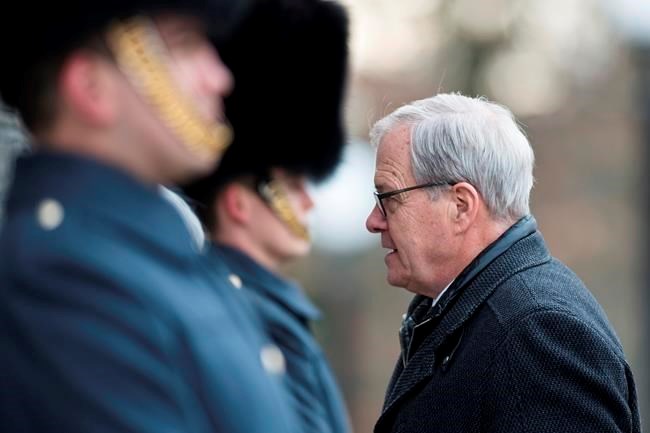OTTAWA — The head of the union representing Veterans Affairs Canada case managers is warning her members are near their “breaking point” thanks to an excessive amount of work and lack of support from higher ups.
Yet Virginia Vaillancourt of the Union of Veterans Affairs Employees is also skeptical of the government’s promises to address the problem after what she describes as six years of “Band-Aid” solutions under the Liberals.
“The government needs to put their money where their mouth is and fix the situation,” Vaillancourt said in an interview. “They’ve been talking about it for six years, and they’ve done nothing, in my opinion, except to put temporary Band-Aids on it.”
Vaillancourt’s comments come days after a former Veterans Affairs Canada case manager told The Canadian Press that disabled veterans are being put at risk as overwhelmed case managers try to juggle dozens of files before burning out and leaving.
Lucy Hirayama's decision to come forward followed a series of stories that looked at some of the most pressing challenges facing veterans today, including the large number of former Armed Forces members with complex needs assigned to individual case managers.
Case managers help veterans with complex needs develop plans for their successful re-entry into civilian life after leaving the military for medical reasons. They are responsible for co-ordinating the different medical and financial resources needed for that transition.
Recognizing their importance, the Liberal government promised in the 2015 federal election to reduce the number of veterans assigned to individual case managers to an average of 25 to 1, after the number topped 40 to 1 under the Conservatives.
Yet Veterans Affairs says the average case manager across Canada has 33 veterans assigned to them, while the union which represents case managers says a survey of its members over the summer found the majority had more than 35 files and some had over 50.
Vaillancourt attributes the discrepancy to the way the department tracks the caseloads of case managers who go on extended or sick leave, saying other case managers end up picking up the load even though the files technically remain with the absent staff member.
“So that’s why the numbers aren’t accurate ... because they’re not keeping accurate records,” she said, adding the department has refused to say how many of its case managers are currently on sick leave after burning out.
Veterans Affairs Minister Lawrence MacAulay has said the government will make good on its promise during the recent election campaign to hire more case managers and other staff for the department, but he has yet to provide further details.
Meanwhile, Veterans Affairs says its budget allows for 476 case managers — and that those positions are filled with 426 permanent and 50 temporary staff. Asked about meeting the 25-to-1 ratio, it says it is working to ease the administrative burden on case managers.
If the government was serious about supporting veterans, Vaillancourt said it would have already put the temporary case managers as well as more than 560 other contract staff hired to help with a backlog of disability claims on the department’s permanent payroll.
Funding for those temporary staff members is set to expire in March, and while the department has said some will be retained, it has not said how many or when they will know their jobs are safe.
“If they're hiring more case managers, why are they letting the current temporary staff that have been hired go in March of 2022 when they're already trained and up to speed?” Vaillancourt asked. “They should be issuing letters to extend or make them permanent.”
Meanwhile, a planning document tabled in the House of Commons earlier this year showed the overall workforce at Veterans Affairs is expected to fall from around 3,600 this year to 2,900 next year if the temporary staff leave.
The department’s internal services budget, which pays for salaries and other operating expenses, is similarly set to drop to $80 million next year from $100 million in 2019-20 as temporary funding for those staff members expires.
Those declines both come despite the government projecting a continuing increase in the number of ill and injured veterans coming forward for financial and medical assistance over the next few years, many of whom will also require a case manager.
Since Hirayama came forward to share her experience at Veterans Affairs, Vaillancourt said she has heard from other case managers still working in the department who praised her decision to speak out and privately voiced many of the same concerns.
“It’s right across the country,” Vaillancourt said. “It’s not just one respective office or one respective region. It is all of the regions that are busting at the seams and are frustrated. ... None of them want to see another veteran fall through the cracks.”
This report by The Canadian Press was first published Nov. 16, 2021.
Lee Berthiaume, The Canadian Press




